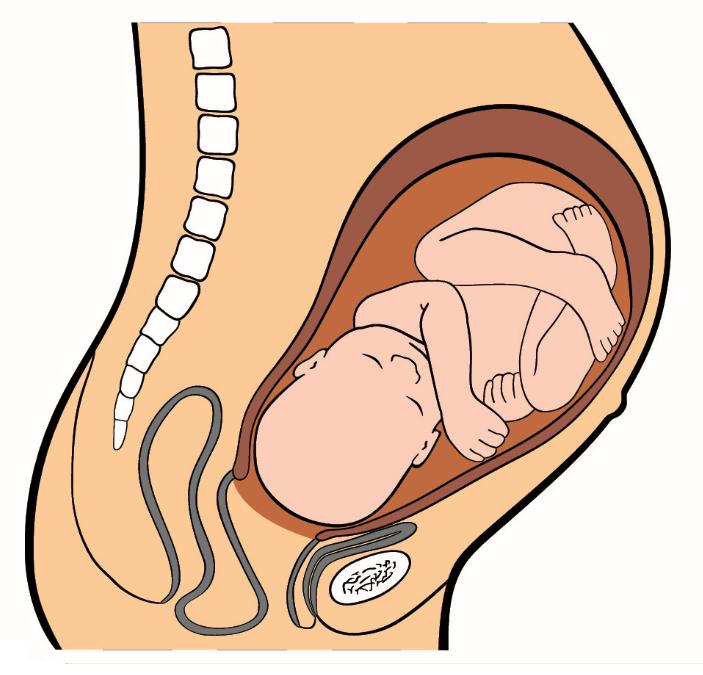After the egg is fertilised, the embryo develops inside the mother until it is time for the baby to be born.

How does it grow? Does it feed or breathe? What happens if the pregnant Mum trips over?
These are the sort of questions that we'll be exploring in this activity.
You may remember that a woman's menstrual cycle is a regular monthly cycle and that the point at which the gametes (the sperm and egg) meet is called fertilisation. In mammals, that happens in the oviducts or fallopian tubes. However, it is the uterus (or womb) that sustains the embryo as it grows inside, and a special organ develops there to supply all the baby's needs and to take away its waste products - that organ is called the placenta.

As the embryo grows, and begins to resemble the young mammal it's going to become, it is called a fetus (or foetus). What sort of things do you think it needs that the placenta supplies? Things like oxygen and food, for example. What sort of waste does the placenta remove? Waste like carbon dioxide and urea (which forms urine).
The young mammal is joined to the placenta by an umbilical cord along which the chemicals flow (in and out) through blood vessels. Wonderfully, the fetus floats in a fluid-filled sac which protects it from the knocks and bangs that are a normal part of the pregnant mum's life. This is called the amniotic sac and the fluid inside is called amniotic fluid. It's brilliant at absorbing shocks.

Hopefully, this information, together with what you've already been learning about, mean that you're ready to test out your knowledge of what happens inside a mum's body before the youngster is born. Let's see......








